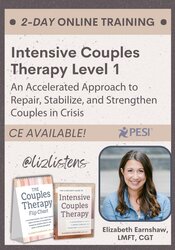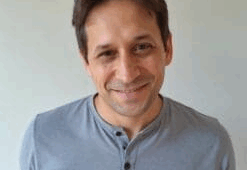FREE LIVE EVENT! | 2-Day Trauma Conference: The Body Keeps the Score-Trauma Healing Through the Senses with Bessel van der Kolk, MD
Nobody can “treat” abuse, rape, molestation, or any other horrendous event. What has happened cannot be undone. But what can be dealt with are the... Read more
FREE LIVE EVENT! | 2-Day Trauma Conference: The Body Keeps the Score-Trauma Healing Through the Senses with Bessel van der Kolk, MD
Nobody can “treat” abuse, rape, molestation, or any other horrendous event. What has happened cannot be undone. But what can be dealt with are the... Read more
FREE LIVE EVENT! | Boundaries and Dual Relationships in Clinical Practice: Ethical and Risk Management Challenges
As clinicians we come face to face with ethical “gray areas” daily and often skate around potential issues that could put our businesses, clinical... Read more
Why Gen-Alpha Slang Matters More Than You Think
Exploring What It Really Means in TherapyTherapists working with adolescents and teens don't need to be fluent in Gen-Alpha slang: they need to be curious without being theatrical. Read more
Year-End Financial Moves Every Therapist Should Know
Practical Ways to Reduce Stress, Lower Your Taxes, and Start 2026 StrongA few focused, well-timed decisions can help therapists meaningfully reduce their tax liability and ease the transition into next year. Read more
FREE LIVE EVENT! | 2-Day Intensive Couples Therapy Level 1 Training: An Accelerated Approach to Repair, Stabilize, and Strengthen Couples in Crisis
Traditional 50-minute sessions often limit the progress couples can make—particularly when emotional flooding, conflict cycles, and unfinished... Read more
FREE LIVE EVENT! | Clinical Applications of Internal Family Systems Therapy: Step-by-Step Procedures for Healing Traumatic Wounds and Alleviating Anxiety, Depression, Trauma, Addiction and More
After decades of clinical innovation and recent scientific research, the empirically validated Internal Family Systems (IFS) model has been shown to be... Read more
FREE LIVE EVENT! | 2-Day Intensive Couples Therapy Level 1 Training: An Accelerated Approach to Repair, Stabilize, and Strengthen Couples in Crisis
Traditional 50-minute sessions often limit the progress couples can make—particularly when emotional flooding, conflict cycles, and unfinished... Read more
Self-Study | FREE LIVE EVENT! | 2-Day Intensive Couples Therapy Level 1 Training: An Accelerated Approach to Repair, Stabilize, and Strengthen Couples in Crisis
Traditional 50-minute sessions often limit the progress couples can make—particularly when emotional flooding, conflict cycles, and unfinished... Read more
FREE LIVE EVENT! | 2-Day Anxiety Certification Course: Integrate CBT and Exposure & Response Prevention for Treatment of GAD, Panic Disorder, OCD, Social Anxiety, & Phobias
Do you feel overwhelmed by the severity of your client’s anxiety symptoms? Does their need to seek reassurance and perform compulsions prevent them from... Read more
Anxiety Certification Course: Integrate CBT and Exposure & Response Prevention for Treatment of GAD, Panic Disorder, OCD, Social Anxiety, & Phobias
Do you feel overwhelmed by the severity of your client’s anxiety symptoms? Does their need to seek reassurance and perform compulsions prevent them from... Read more
Psychiatry Has a New Hero
Awais Aftab Envisions a Humbler Approach to Mental IllnessPsychiatrist Awais Aftab has been inviting the most prominent thinkers in psychiatry to move beyond familiar narratives, embrace complexity, and change the... Read more
IFS Integration
In this skillfully curated collection, IFS clinician, author, and editor Jenna Riemersma brings together 30 leading IFS practitioners to share their expertise... Read more
FREE LIVE EVENT! | Integrating Sex Therapy for Couples: EFT, Attachment, Polyvagal, Somatic & Sensate Strategies for Rekindling Desire
Join Rebecca Howard Eudy, PhD, LMHC, for a 3-hour clinical training designed to help therapists work more confidently at the intersection of sex and couples... Read more
FREE LIVE EVENT! | Integrating Sex Therapy for Couples: EFT, Attachment, Polyvagal, Somatic & Sensate Strategies for Rekindling Desire
Join Rebecca Howard Eudy, PhD, LMHC, for a 3-hour clinical training designed to help therapists work more confidently at the intersection of sex and couples... Read more
Using Psychodrama to Break the Trauma Loop
A Tool for Healing Adult Children of AddictsFor adult children of addicts who've distanced themselves from their painful pasts, interventions that require them to show rather than tell can be... Read more
Listen to the November/December 2025 Magazine Issue!
The Year that Reshaped Therapists: Finding Regulation in a Dysregulated WorldListen to the audio version of the November/December 2025 issue of Psychotherapy Networker magazine. Read more
Caring for Clients Without Abandoning Yourself
How to Serve Wisely in a System That Doesn'tMany therapists confuse sacrifice with service. But when the impulse to care crosses into self-abandonment, no one wins. Read more
Confronting "Mom Guilt"
A Tool to Work Through Core EmotionsParental guilt is often misunderstood, even by experienced clinicians. The Change Triangle can bring this tricky emotion out into the open and help people work... Read more
Energy Psychology's Battle for Recognition
A Growing Healing Movement vs APA's Division 12Of all the David-and-Goliath matchups in psychotherapy, few have had as many twists and turns as the one unfolding between energy psychology and the APA’s... Read more
5 Common Factors for Change in Therapy
A New Integrative Treatment FrameworkAcross all our therapeutic modalities, there are elements that most effectively create change. What do these elements have in common, and how can you integrate... Read more
5 Most Popular Therapist Memes
Humor and Insights Your Colleagues Are SharingIn our quest for healing and connection in a chaotic world, a wacky meme can be a powerful tool. Read more
A Case of Disappearing Desire
Two Approaches to a Client with Commitment IssuesSex therapist Tammy Nelson and trauma specialist Frank Anderson take different paths to empower a client struggling with intimacy. Read more
Confusion in Therapyland
Finding Regulation in a Dysregulated WorldA fantastical journey leads an overwhelmed clinician to unexpected interactions with some of our field's leading luminaries, including Ramani Durvasula, Terry... Read more

























